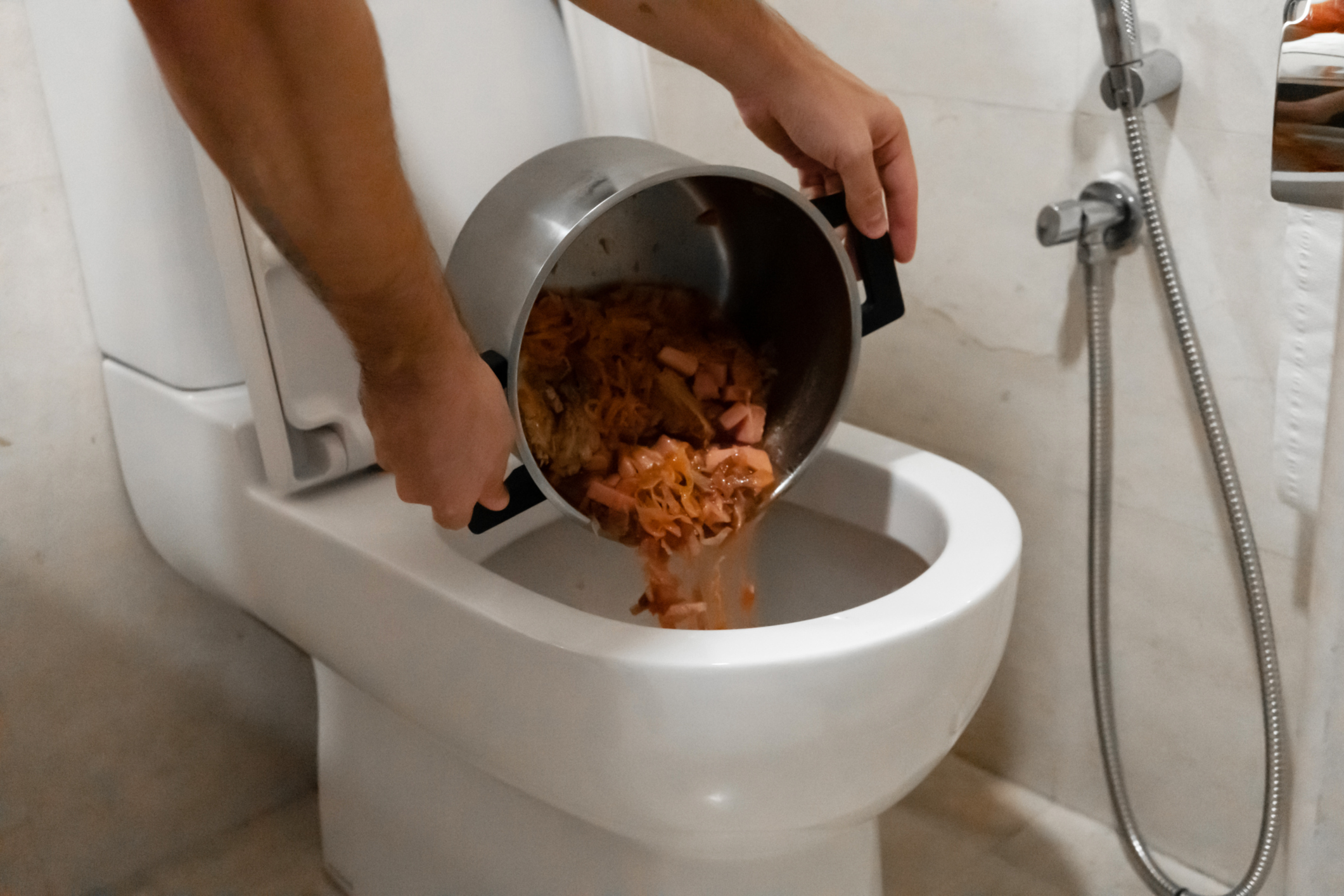Is it Feasible to Flush Food in the Toilet?
Is it Feasible to Flush Food in the Toilet?
Blog Article
The article author is making a number of great pointers regarding Think Twice Before Flushing Food Down Your Toilet overall in this content just below.

Introduction
Many people are frequently faced with the issue of what to do with food waste, specifically when it pertains to leftovers or scraps. One typical concern that occurs is whether it's okay to purge food down the toilet. In this short article, we'll delve into the reasons people may take into consideration purging food, the effects of doing so, and alternate approaches for proper disposal.
Reasons individuals might think about flushing food
Lack of awareness
Some individuals might not know the potential injury caused by purging food down the bathroom. They may erroneously believe that it's a safe method.
Convenience
Flushing food down the commode may feel like a quick and simple remedy to taking care of unwanted scraps, particularly when there's no close-by garbage can available.
Idleness
In some cases, people may simply select to flush food out of sheer negligence, without taking into consideration the effects of their activities.
Effects of flushing food down the commode
Ecological influence
Food waste that winds up in waterways can add to air pollution and injury marine communities. Furthermore, the water used to purge food can stress water sources.
Plumbing issues
Purging food can bring about clogged up pipes and drains, creating expensive plumbing repair work and hassles.
Sorts of food that must not be flushed
Coarse foods
Foods with fibrous appearances such as celery or corn husks can get entangled in pipes and create blockages.
Starchy foods
Starchy foods like pasta and rice can soak up water and swell, resulting in clogs in pipelines.
Oils and fats
Greasy foods like bacon or cooking oils must never ever be flushed down the bathroom as they can strengthen and trigger clogs.
Correct disposal approaches for food waste
Utilizing a garbage disposal
For homes geared up with garbage disposals, food scraps can be ground up and purged through the plumbing system. However, not all foods appropriate for disposal in this way.
Recycling
Certain food product packaging materials can be recycled, lowering waste and decreasing ecological influence.
Composting
Composting is an environment-friendly method to deal with food waste. Organic products can be composted and utilized to enhance dirt for gardening.
The value of appropriate waste management
Minimizing ecological harm
Appropriate waste monitoring practices, such as composting and recycling, assistance decrease contamination and maintain natural resources for future generations.
Safeguarding pipes systems
By avoiding the method of flushing food down the bathroom, home owners can protect against expensive pipes fixings and keep the integrity of their pipes systems.
Conclusion
In conclusion, while it may be appealing to flush food down the toilet for comfort, it is essential to understand the potential consequences of this activity. By taking on appropriate waste administration practices and getting rid of food waste properly, individuals can add to healthier plumbing systems and a cleaner environment for all.
FLUSH FOOD DOWN THE TOILET?
FLUSHING FOOD CAN CAUSE BLOCKED DRAINS IN YOUR HOME
All of the plumbing fixtures in your home are connected to the same sewer pipe outside of your home. This outdoor sewer pipe is responsible for transporting all the wastewater from your home to the Council sewer mains. Even small pieces of food that go down the kitchen sink can cause problems for your sewer. It should therefore be obvious that flushing larger bits of food, such as meat, risks a clog in either the toilet itself or the sewer pipes. Flushing greasy food is even more problematic because oil coagulates when it cools, coating the interior lining of your pipes.
THE TOILET IS NOT A BIN
Food isn’t the only thing that people shouldn’t be flushing down the toilet. People use the toilet to dispose of all kinds of things such as tampons, makeup wipes, dental floss, kitty litter and even underwear. Water goes to great lengths to educate residents about the high costs and stress placed on wastewater treatment systems simply from people flushing the wrong stuff down the toilet. It costs taxpayers millions of dollars each year, and homeowners thousands in blocked drain repairs.
FLUSHING FOOD IS A WASTE OF WATER
Flushing food is a waste of our most precious resource - water. In June this year Level 1 water restrictions were introduced to protect water supply from drought conditions. Much of New South Wales continues to be affected by prolonged drought with recent figures revealing up to 97 per cent of the state remains in drought. Depending on whether you have a single or dual flush toilet, every single flush uses between five and 11 litres of water. In the current climate this is a huge amount of water to be wasting on flushing food that should be placed in the bin (or better yet, the compost).
https://www.jabplumbingsolutions.com.au/blog/can-you-flush-food-down-the-toilet

Do you appreciate reading up on What Can Happen If You Flush Food Down the Toilet?? Make a remark further down. We would be delighted to hear your feelings about this write-up. In hopes to see you back again later on. Remember to pause to distribute this article if you enjoyed reading it. Thank you so much for going through it.
Source Report this page